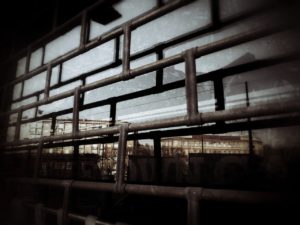Steel frame structures and steel stud framing have revolutionized the construction industry with their exceptional strength, durability, and versatility. These innovative building techniques have gained significant popularity and are being embraced by architects, engineers, and contractors worldwide. In this article, we will delve into the advantages of steel frame structures and steel stud framing, exploring how they are transforming the way we build.
Steel frame structures, characterized by their robust steel framework, offer numerous advantages over traditional construction methods. One of the key benefits is their remarkable strength. Steel has a high tensile strength, allowing it to withstand heavy loads and extreme weather conditions. This structural integrity makes steel frame structures ideal for high-rise buildings, bridges, warehouses, and industrial facilities.
They are incredibly durable. Unlike wood, steel is not prone to warping, rotting, or termite damage. This longevity ensures that steel frame structures require minimal maintenance and have a longer lifespan, resulting in cost savings over time. Moreover, steel is non-combustible, making it a safer choice in terms of fire resistance.
Steel stud framing, on the other hand, is a specific application of steel framing commonly used in interior walls, partitions, and ceilings. This method involves the use of lightweight steel studs and tracks, which are fastened together to create a framework for the construction of non-load-bearing walls. Steel stud framing offers several advantages, including speed of installation and design flexibility.
One of the notable benefits of steel stud framing is its rapid installation process. Steel studs are lightweight and easy to handle, allowing for quick assembly on-site. This efficiency translates into reduced construction time and labor costs. Furthermore, steel studs are precision-engineered, ensuring consistent dimensions and eliminating the need for on-site cutting and modifications.
Design flexibility is another advantage of steel stud framing. The lightweight nature of steel studs enables architects and designers to create innovative and customized spaces. Steel studs can be easily curved or shaped to accommodate unique architectural features, giving architects more creative freedom in their designs. Moreover, steel studs can be integrated with other building materials, such as glass or wood, to achieve aesthetically pleasing and structurally sound spaces.
In addition to their strength, durability, and design flexibility, steel stud framing offer environmental benefits. Steel is a highly recyclable material, making it a sustainable choice for construction. Steel components can be reused or recycled at the end of a building’s life cycle, reducing waste and minimizing environmental impact. Furthermore, steel frame structures have excellent energy efficiency, allowing for the integration of insulation materials to enhance thermal performance and reduce energy consumption.
The rise of steel frame structures and steel stud framing has transformed the construction industry, offering unparalleled strength, durability, and design possibilities. From skyscrapers to residential buildings, these construction methods have proven their worth in delivering safe, efficient, and sustainable structures. As technology continues to advance, we can expect further innovations and advancements in steel framing techniques, ensuring that steel remains at the forefront of modern construction practices.
Steel frame structures and steel stud framing provide exceptional resistance against natural disasters. Due to steel’s inherent strength and rigidity, buildings constructed with steel frames have a higher capacity to withstand earthquakes, hurricanes, and other extreme weather events. The flexibility of steel allows it to absorb and dissipate energy during seismic activity, reducing the risk of structural failure. This advantage not only protects the occupants of the building but also minimizes damage to the structure itself, resulting in potential cost savings for repairs and reconstruction.

In terms of cost-effectiveness, steel frame structures and steel stud framing offer compelling advantages. Although the upfront costs of steel materials may be higher compared to traditional construction materials, the long-term benefits outweigh the initial investment. Steel’s durability and low maintenance requirements translate into reduced operational costs over the life of the building. Additionally, the faster installation time of steel stud framing can lead to savings in labor costs and shorter construction schedules, allowing for earlier occupancy or quicker project turnover.
Steel frame structures and steel stud framing also contribute to sustainable and eco-friendly construction practices. Steel is a highly recyclable material, and its recyclability rate is impressive. At the end of a building’s life cycle, steel components can be easily recycled and repurposed, reducing the demand for new raw materials and minimizing waste. The energy efficiency of steel frame structures is another environmental benefit. With proper insulation and energy-efficient design strategies, these structures can optimize thermal performance and reduce energy consumption, resulting in lower carbon emissions and a smaller ecological footprint.
Steel stud framing offer exceptional design versatility. The strength and malleability of steel allow architects and designers to create unique and innovative building designs. From open-plan layouts to intricate facades, steel can support a wide range of architectural concepts. Steel’s slim profiles and increased spans provide greater flexibility in interior space planning, allowing for larger open areas and flexible room configurations. This adaptability is particularly advantageous in commercial and industrial settings where large, column-free spaces are often required.
The advantages of steel frame structures and steel stud framing are undeniable. From their exceptional strength and durability to their design flexibility and environmental benefits, these construction methods have transformed the industry. The resistance against natural disasters, cost-effectiveness, sustainability, and design versatility make steel frame structures and steel stud framing a preferred choice for a wide range of construction projects. As technology and engineering techniques continue to advance, we can expect further improvements and innovations in steel construction, solidifying its position as a leading material in the building industry. Whether it’s a towering skyscraper or a humble residential home, the enduring power and versatility of steel frame structures and steel stud framing continue to shape the future of construction.
